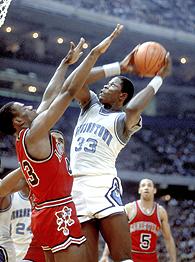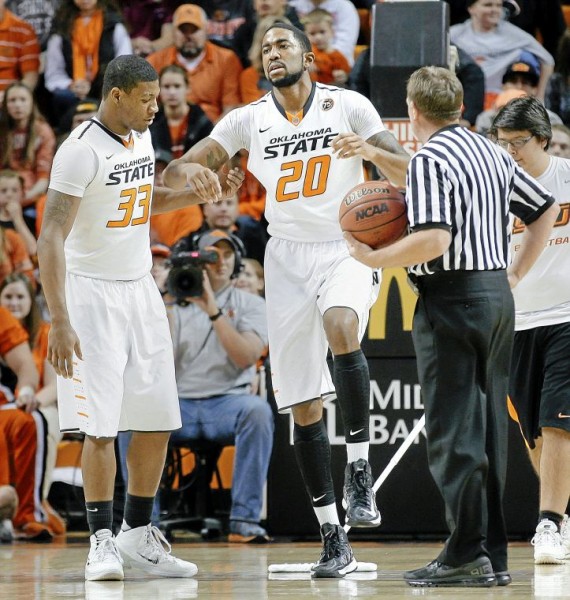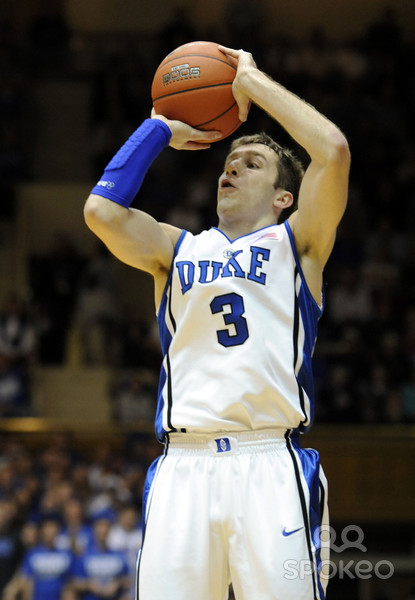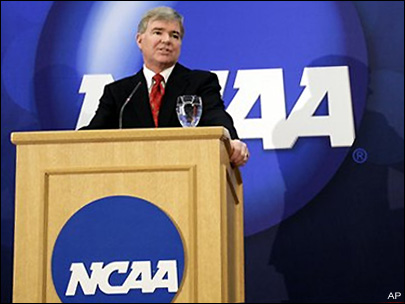Posted by Brian Otskey on November 20th, 2012

Brian Otskey is a regular contributor for RTC. Every Tuesday during the regular season he’ll be giving his 10 thoughts on the previous week’s action. You can find him on Twitter @botskey
- As someone who doesn’t watch one minute of college football but loves college basketball to no end, conference realignment frustrates me to no end as you might imagine. It’s actually quite depressing and I hate talking/writing about it. However, it’s a relevant story and must be discussed because of the far-reaching impacts it will have on the sport I love. I realize this is all about “stability,” TV markets and football. It bothers me like nothing else but I accept it. I’m in the minority when it comes to this and the minority holds very little influence in our country. The consequences (both intended and unintended) of realignment for basketball are distressing. The Big East conference, the pre-eminent college basketball league for the last 25 to 30 years, is on life support. The conference I grew up watching, with the best conference tournament of them all, is all but gone. Yes, Connecticut and Louisville are still in the league, but make no mistake, they’ll bolt at the first opportunity they get as we saw this week with Rutgers going to the Big Ten. Once everything shakes out, I find it hard to believe any Big East football program will remain in the league. It simply makes no sense to do so at this point and they’re looking out for themselves in doing so. I don’t blame them. I blame the greedy conference leadership concerned about how many eyeballs the Big Ten Network can draw in New York and New Jersey, the schools who set this in motion (Syracuse and Pittsburgh), and the Big East as a whole for turning down a massive TV deal that could have given the conference a great deal of security. Once the football schools leave, the Big East will be down to seven Catholic basketball-only schools: DePaul, Georgetown, Marquette, Providence, St. John’s, Seton Hall and Villanova. As an alumnus and fan of one of those seven schools, this pains me greatly. I could live with Pittsburgh, West Virginia and Notre Dame leaving the league. The real punch to the gut was Syracuse, a Big East founding member, saying it could find long-term stability in the ACC. The final, fatal blow will be Connecticut and/or Louisville bolting, likely in short order. The basketball-only schools have no leverage and must wait and see as everything crashes around them. Hopefully they get together, keep the Big East name and pick up a few other schools like Butler, St. Joe’s and Xavier. That wouldn’t be a bad league and it would get back to the roots of the Big East, basketball and basketball only.

The Big East Needs to Find Its Roots in Basketball
- How does realignment affect other schools and conferences? For one, the bottom teams in the ACC may stay there for a very long time. With Syracuse, Pittsburgh and Notre Dame coming in (and possibly Connecticut/Louisville), how will schools like Wake Forest and Boston College compete? There will be a good five or six programs ahead of them each and every year, plus they have to battle it out with the likes of Clemson, Virginia Tech and Georgia Tech just to make it into the middle of the pack. It’s a vicious cycle that will keep programs like these as the bottom of their respective conference for many years to come. They always said it was tough to climb up the Big East ladder but now the ACC is effectively the Big East (six of the ACC’s 14 future members, not including Maryland, will be former Big East schools). It’s going to be extraordinarily tough for schools like Boston College to compete in the revamped ACC. Only the strong shall survive in conference realignment, it seems. As for the Big Ten, the impact isn’t as significant. Penn State, Nebraska and Northwestern will always be among the worst programs in the league but the climb to respectability isn’t as difficult. Look at Northwestern. The Wildcats have never made the NCAA Tournament despite knocking on the door in the last few seasons, showing how it isn’t impossible to climb the conference ladder. Now though, the addition of a similarly starved program at Rutgers and a strong program at Maryland makes it more difficult for Northwestern to make a move. It’s uncertain what Rutgers is getting itself into. The Scarlet Knights haven’t made the NCAA Tournament in 22 seasons but have shown signs of progress under Mike Rice. You have to think it can go either way for Rutgers. The new recruiting avenues can help but the school is already situated in the middle of the talent-rich New York City area. That said, road trips to Wisconsin and Michigan State aren’t as simple as heading over to St. John’s or up to Providence. I’d lean towards Rutgers struggling in the Big Ten. Read the rest of this entry »
| Regular Features, ten tuesday scribbles
| Tagged: acc, andre roberson, askia booker, ben brust, ben howland, big east, big ten, chaminade, colorado, conference realignment, connecticut, dj byrd, georgetown, john thompson III, Josh Scott, jp olukemi, marcus smart, markel brown, markel starks, maui invitational, myck kabongo, ncaa rules, oklahoma state, rick barnes, ryan boatright, sam dekker, shabazz muhammad, shabazz napier, Sheldon McClellan, spencer dinwiddie, tad boyle, texas, travis ford, ucla, wisconsin
Share this story















































